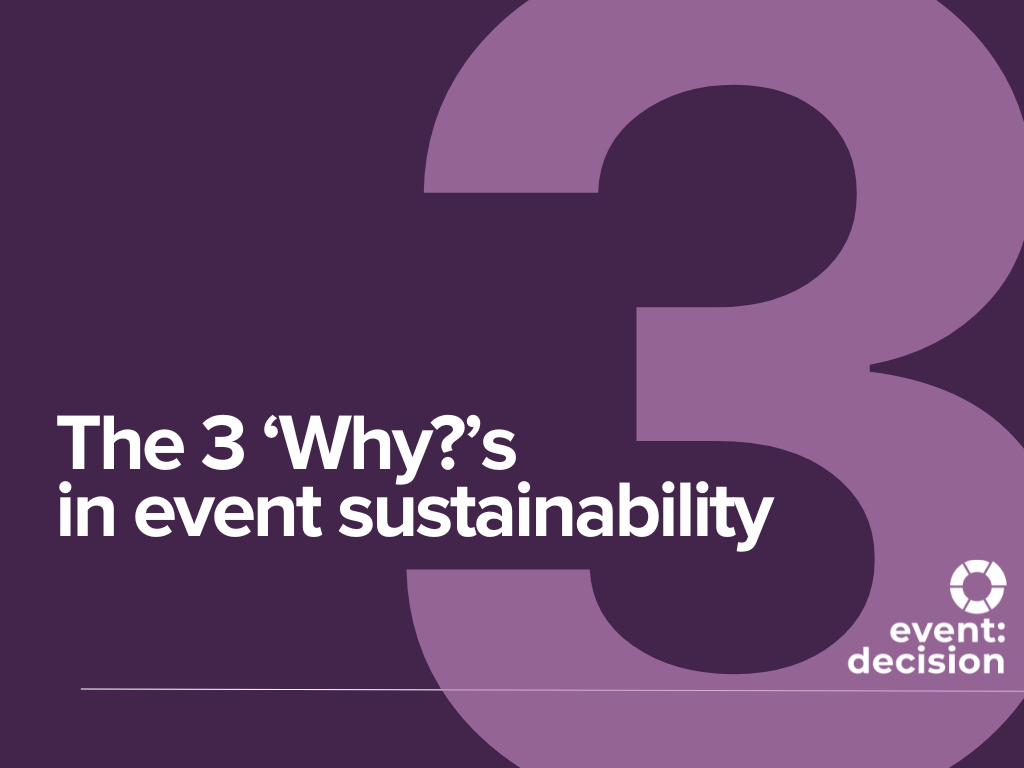The dangers of green-hushing for events
The events industry is no stranger to the concept of greenwashing, or the act of promoting environmentally-friendly initiatives and practices in order to appear more sustainable, without actually taking any substantial steps towards sustainability. However, in recent years, ‘green-hushing’ has emerged as a new and particularly dangerous form of greenwashing in events.
Green-hushing is the act of actively hiding or downplaying the environmental impact of an event, rather than promoting sustainability. This can take the form of not disclosing information about the carbon footprint of an event, not offering environmentally-friendly options for attendees, or simply not addressing sustainability at all.
While it may be tempting for events organisers to engage in green-hushing in order to cut costs or avoid criticism, the dangers of this practice are far-reaching.
Dangers of green-hushing
First and foremost, green-hushing is dishonest and deceptive. It misleads attendees and stakeholders into believing that an event is more sustainable than it actually is, and can damage the reputation of both the event and the industry as a whole. Trust is a critical component of any business relationship, and green-hushing undermines this trust by hiding important information and presenting a false image.
In addition to damaging reputation, green-hushing can also have negative financial consequences. As more and more consumers and businesses prioritise sustainability in their purchasing decisions, events that are not transparent about their environmental impact may face decreased attendance and sponsorship. This can lead to lost revenue and ultimately, financial harm for the event organisers.
Green-hushing also contributes to the larger problem of climate change and environmental degradation. By not addressing the environmental impact of an event, organisers are failing to take responsibility for their personal role in this global issue. This lack of responsibility not only perpetuates the problem, but also undermines the efforts of those in the industry who are working to make events more sustainable.
So, what can event organisers do to avoid green-hushing and ensure that their events are truly sustainable?
Three steps to avoid green-hushing
#1 Transparency is key. Event organisers should be open and honest about the environmental impact of their events, including the carbon footprint and any other relevant information. This not only helps to build trust with attendees and stakeholders, but it also allows organisers to identify areas where they can improve sustainability. Assessing the carbon footprint of any event at planning stage is now accessible to event organisers large and small through track from event:decision.
#2 Reduce environmental impact. Event organisers should make a concerted effort to reduce their environmental impact by implementing sustainable practices such as using eco-friendly materials, reducing waste, and offering sustainable transportation options for attendees. These practices not only help to minimise the environmental impact of the event, but they can also save money in the long run.
#3 Be proactive and promote. Finally, event organisers should be proactive in their efforts to promote sustainability. This can involve partnering with environmental organisations, educating attendees about sustainability, and offering incentives for those who take environmentally-friendly actions.
Green-hushing is a dangerous practice for the events industry. It undermines trust, can have negative financial consequences, and contributes to the larger problem of climate change. Event organisers who prioritise transparency, sustainability, and proactivity will not only do their part to protect the environment, but they will also position themselves as leaders in events.
To find out more about our carbon footprint and sustainability tool track, and how it can help plan and execute fully sustainable events, please get in touch.








